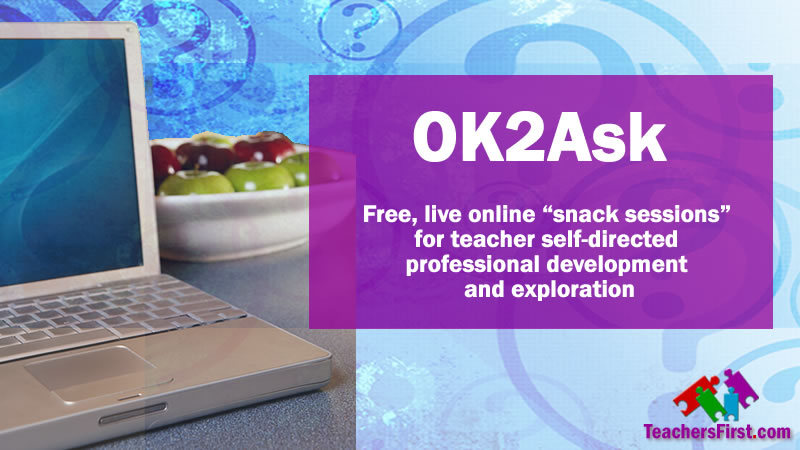Barriers and Blessings: A Bionic Humpty Dumpty Story
As Thanksgiving approaches, I thought it appropriate to talk about the blessings of educational technology for which we should all be thankful.
I talked with several teachers this week about what concerns them most as they plan a technology-infused activity or project with their students. As part of an OK2Ask online professional development “snack session” TeachersFirst conducted, we asked teachers, both preservice and experienced, what challenges they encounter in these activities.
The sampling of attendees in these online sessions came was a non-scientific one, comprised of about 25 preservice folks: teacher-interns, undergrad and graduate level teacher certification candidates, and about 25 current classroom teachers. The results knocked me down with a wave of deja vu. Almost every teacher currently in the classroom emphasized concern over availability and reliability of the hardware and Internet connection needed to do the activity. The 25 newbies voiced similar concern along with general management and planning issues.
When I moved full time into a role as an instructional technology specialist/technology integrator about ten years ago, this was the cry I heard from teachers. Before that, when I was just another teacher trying to convince fellow teachers to try using the Internet, the cry was the same. Has nothing changed? Even in schools blessed with better-than-average facilities, the demand is higher, so the barriers grow proportionately. Will we ever get past the wall of “I can’t get the (reliable) computer time I need”? Is this barrier real or perceived? Has this complaint become a habit, or do teachers still have trouble with the Internet going down mid-class? My experience was that if a lesson”failed” once, it took ten times the effort to convince that teacher to try again. And I can’t say that blame them. It is a nightmare to have thirty eighth graders off task while you trouble-shoot the wireless or make up new directions on the fly because the Internet is glitchy. And you end up planning two lessons: the ideal and the back-up.
 So where are the blessings here? In the last ten years, the students have come to the rescue. We are blessed with kids who can help figure things out. We are blessed that the demand has grown to use technology in the schools. We are blessed that bandwidth has improved dramatically, even in poorer schools, but so has demand. With every blessing comes another barrier. When a Humpty Dumpty of a lesson idea falls down, we have better tools to rebuild him, but he will probably fall off his new and improved wall again and again. We can rebuild our bionic Humpty Dumpty over and over. New barrier, new fall, new blessing. Teaching really hasn’t changed. We just have faster-evolving blessings and barriers these days.
So where are the blessings here? In the last ten years, the students have come to the rescue. We are blessed with kids who can help figure things out. We are blessed that the demand has grown to use technology in the schools. We are blessed that bandwidth has improved dramatically, even in poorer schools, but so has demand. With every blessing comes another barrier. When a Humpty Dumpty of a lesson idea falls down, we have better tools to rebuild him, but he will probably fall off his new and improved wall again and again. We can rebuild our bionic Humpty Dumpty over and over. New barrier, new fall, new blessing. Teaching really hasn’t changed. We just have faster-evolving blessings and barriers these days.









